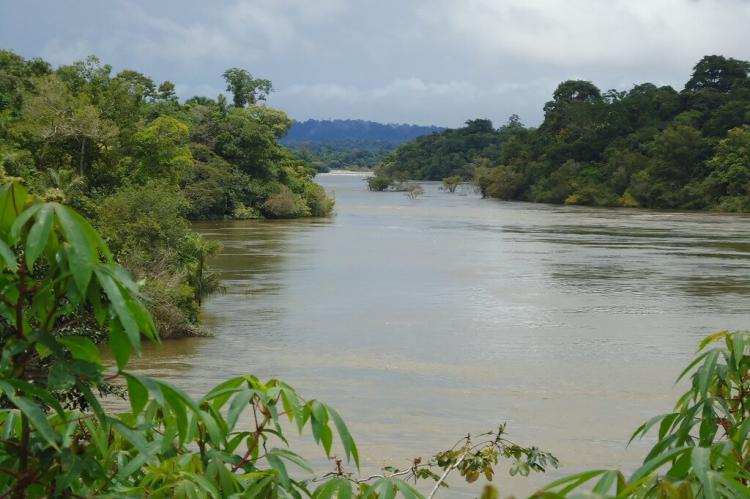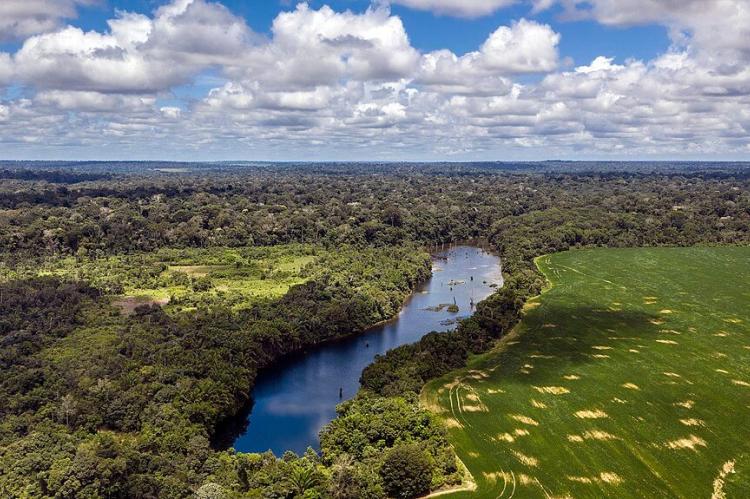Amazonia National Park: Preserving the Rich Mosaic of the Amazon Rainforest
Amazonia National Park in Brazil is the oldest in the Amazon Rainforest. It spans over a million hectares along the Tapajós River, with dense lowland rainforests and white-sand grasslands. It is a transition area between the Amazon Rainforest and the Brazilian Cerrado.
Amazonia National Park
Preserving the Rich Mosaic of the Amazon Rainforest
Nestled within the heart of the Amazon Rainforest in the north-central region of Brazil, Amazonia National Park stands as a testament to the extraordinary biodiversity and ecological importance of the Amazon basin. Established in 1974, it is the oldest national park in the Amazon, covering an expansive 1,070,737 hectares (2,645,848 acres) along the Tapajós River.
Geographical Overview
Amazonia National Park is strategically located in the Pará state of Brazil, tracing the course of the Tapajós River. The river, rising from the Precambrian crystalline shields area of ancient igneous rock, acts as a natural boundary, creating distinct ecosystems on either bank. This geographical diversity enhances the park's significance as a reservoir of unique flora and fauna, fostering a variety of habitats from dense lowland rainforests to white-sand grassland areas along the river's upper reaches.
Protected Area Expansion
To the west, the national park is adjacent to the Pau-Rosa National Forest, covering 827,877 hectares (2,045,728 acres) and was established in 2001. This contiguous protected area expands the scope of conservation efforts, providing a buffer zone and facilitating wildlife movement between the two regions.
Conservation Objectives and Ecotones Corridor
Established with a forward-looking vision in 1974, Amazonia National Park serves the specific objectives of preserving Amazonic ecosystems through scientific research, education, and recreational activities. The park is pivotal in the proposed South Amazon Ecotones Ecological Corridor, acting as a transition area between the Amazon Rainforest in the south and the Brazilian Cerrado in the north. This corridor links various protected areas and indigenous territories, promoting connectivity between diverse biomes.
Biodiversity and Unique Ecosystems
The National Park predominantly consists of dense, humid tropical forests, with approximately 98% covered by lush rainforest. Towering trees, reaching up to 50 meters (164 feet) in height, create a canopy that filters sunlight to produce a biodiverse understory. This dynamic environment teems with plant life, including vines, lichens, mosses, and orchids.
The park is home to a remarkable array of wildlife, with many species adapted to the nocturnal lifestyle. Some iconic and endangered inhabitants include the giant otter, Amazonian manatee, and giant anteater. The intricate ecosystems along the Tapajós River also harbor diverse reptile and fish populations, contributing to the overall richness of the park's biodiversity.
Conservation Challenges and Efforts
While Amazonia National Park plays a crucial role in safeguarding the biodiversity of the Amazon Rainforest, it is not immune to the challenges that threaten these ecosystems globally. Encroachment, deforestation, and climate change threaten the park's delicate balance. Conservation initiatives, including creating protected areas like Pau-Rosa National Forest and the proposed ecological corridor, aim to mitigate these challenges and secure the long-term preservation of Amazonia's unique ecosystems.
Conclusion
Amazonia National Park's rich mosaic of diverse ecosystems and extraordinary biodiversity remains a beacon of conservation in the Amazon Rainforest. As the oldest national park in the region, it stands as a testament to Brazil's commitment to preserving the natural heritage of the Amazon. As conservation efforts expand and connectivity with adjacent protected areas increases, Amazonia National Park serves as a stronghold against the threats facing the Amazon Rainforest, ensuring that future generations can continue to marvel at the wonders of this ecological masterpiece.

![Amazonia National Park (Brazil) by James de Souza [CC BY-SA 3.0 (https://creativecommons.org/licenses/by-sa/3.0)] Amazonia National Park (Brazil)](/sites/default/files/styles/large/public/parque_nacional_amazonia_orig.jpg?itok=KnfIc2kv)
